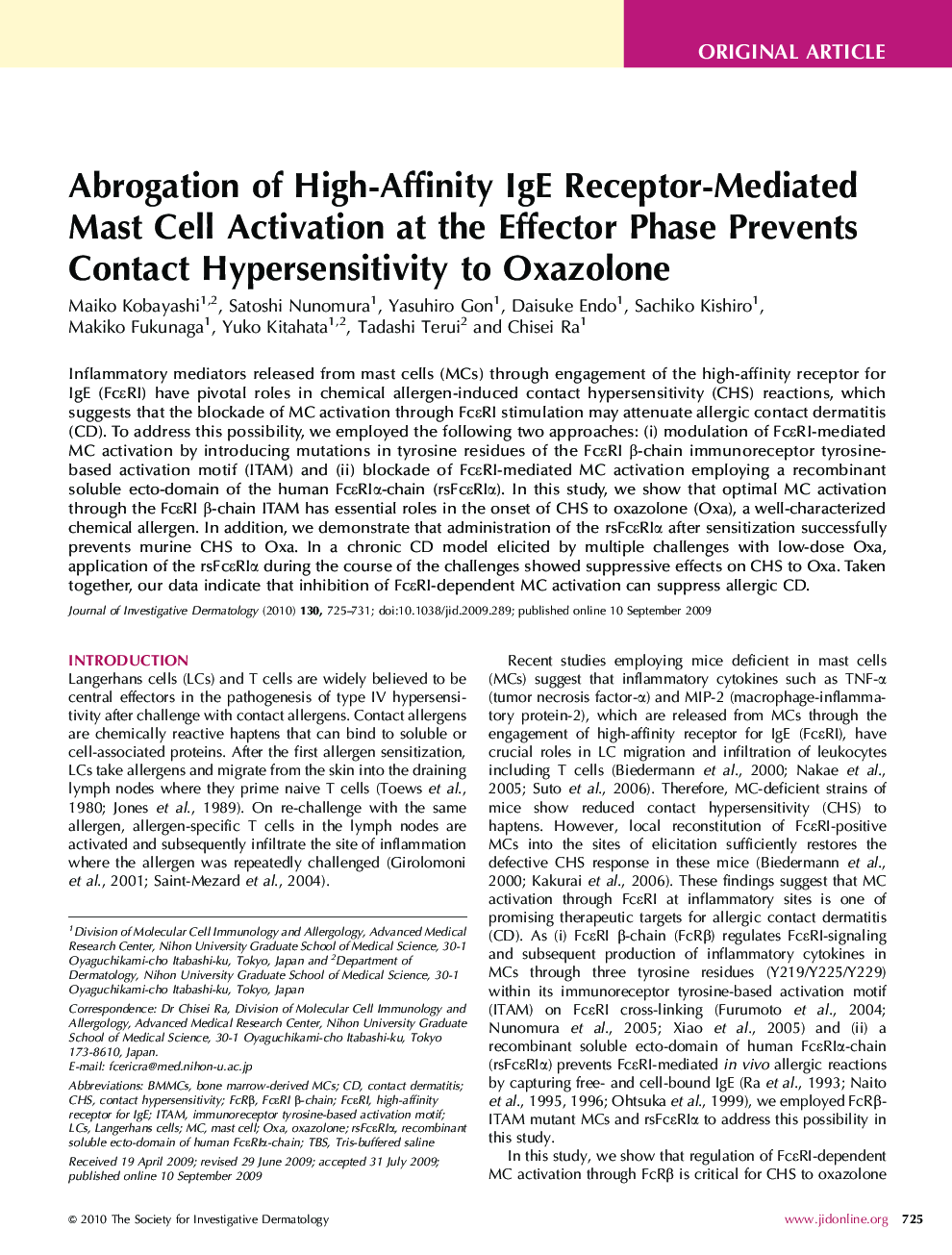| Article ID | Journal | Published Year | Pages | File Type |
|---|---|---|---|---|
| 3216203 | Journal of Investigative Dermatology | 2010 | 7 Pages |
Inflammatory mediators released from mast cells (MCs) through engagement of the high-affinity receptor for IgE (FcεRI) have pivotal roles in chemical allergen-induced contact hypersensitivity (CHS) reactions, which suggests that the blockade of MC activation through FcεRI stimulation may attenuate allergic contact dermatitis (CD). To address this possibility, we employed the following two approaches: (i) modulation of FcεRI-mediated MC activation by introducing mutations in tyrosine residues of the FcεRI β-chain immunoreceptor tyrosine-based activation motif (ITAM) and (ii) blockade of FcεRI-mediated MC activation employing a recombinant soluble ecto-domain of the human FcεRIα-chain (rsFcεRIα). In this study, we show that optimal MC activation through the FcεRI β-chain ITAM has essential roles in the onset of CHS to oxazolone (Oxa), a well-characterized chemical allergen. In addition, we demonstrate that administration of the rsFcεRIα after sensitization successfully prevents murine CHS to Oxa. In a chronic CD model elicited by multiple challenges with low-dose Oxa, application of the rsFcεRIα during the course of the challenges showed suppressive effects on CHS to Oxa. Taken together, our data indicate that inhibition of FcεRI-dependent MC activation can suppress allergic CD.
